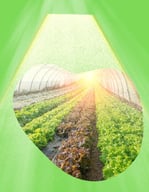
Light is a crucial component of photosynthesis, the process by which plants turn light energy into chemical energy. Diffuse light is an especially important form of light for greenhouses, as it allows for plants to take in more light energy than direct sunlight. Diffuse light is softer, more uniform, and less intense than direct sunlight, meaning that plants can absorb more of it with less risk of burning or drying out.
Diffuse light is created when direct sunlight is scattered in the atmosphere. This is why cloudy days are often described as being “overcast” – the clouds are actually diffusing the sunlight, allowing it to reach the ground in a more evenly distributed pattern. This is beneficial to greenhouses, as the diffused light provides a more even and consistent source of light energy for plants.
Diffuse light is beneficial to greenhouses in a number of ways. It helps to reduce the risk of plants becoming scorched or dried out from intense direct sunlight, and it also means that plants can absorb more light energy than they could from direct sunlight. This can lead to increased growth rates and better yields for plants grown in greenhouses. The softer, less intense light from diffused sources also helps to reduce the risk of fungal or disease growth.








